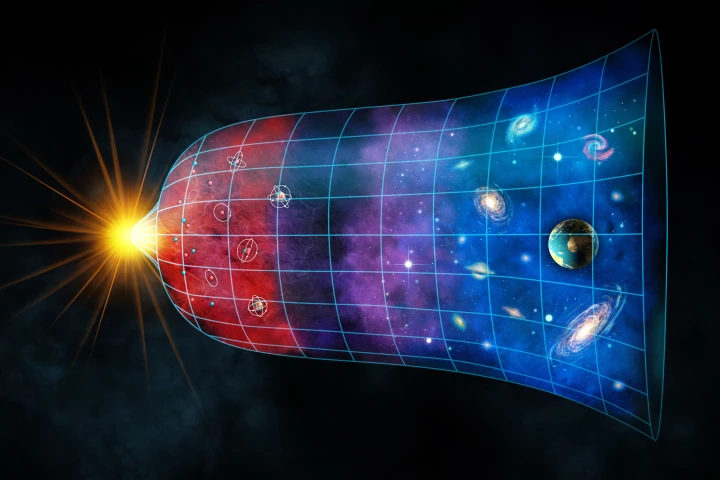Dark Energy
-
Astronomers have produced the largest 3D map of the universe, including an interactive VR video. In the process, they’ve uncovered some tantalizing hints that our understanding of physics, including the ultimate fate of the cosmos, could be wrong.
-
A groundbreaking new study could answer a perplexing astrophysics mystery without complicating our current models. Physicists suggest that black holes could contain a strange form of energy that’s accelerating the expansion of the universe.
-
Astronomers have put together one of the most comprehensive maps of all the matter in the universe. The huge undertaking hints at a slightly smoother universe than we thought, suggesting that something might be missing from our models.
-
Astronomers have released one of the biggest data dumps of the Milky Way ever, cataloging an incredible 3.32 billion cosmic objects in detail. The end result is a gigantic image that can be zoomed in and out for a stunning sense of scale.
-
Everything has to end eventually – including the universe itself. It might be hard to imagine a catastrophe big enough to affect the entirety of existence, but here are some of the leading hypotheses about how the universe could end, and when.
-
Data from DESI's first survey run has produced the largest and most detailed 3D map of the universe so far. The stunning image reveals the gigantic cosmic web of galaxies across billions of light-years – and the project is only just beginning.
-
Last year, physicists reported that an experimental dark matter detector picked up a strange signal. A new Cambridge study suggests it could be the first direct detection of dark energy, the mysterious force accelerating the expansion of the universe.
-
Space is an exceptionally strange place, full of signals and observations that defy our understanding of the universe. In trying to explain these mysteries, sometimes astronomers hypothesize extremely exotic objects that we haven’t yet found.
-
Why is the expansion of the universe accelerating? The leading hypothesis is a repellent force that astrophysicists refer to as “dark energy." But how does it work? What does it mean for our future? And how sure are we that it even exists?
-
The expansion of the universe is accelerating, and current models call the driving force dark energy. But perhaps this placeholder doesn’t exist – a new study has found that dark matter could produce the same effect if it had some form of magnetism.
-
Astronomers have captured a stunning image of one of the Milky Way’s neighboring spiral galaxies. The portrait was taken using an instrument that was created to hunt down dark energy – a force that may be accelerating the expansion of the universe.
-
Scientists have estimated the total amount of matter in the universe using a more precise method. By calculating the mass of hundreds of galaxy clusters, the team found that matter makes up around a third of the contents of the universe.
Load More










